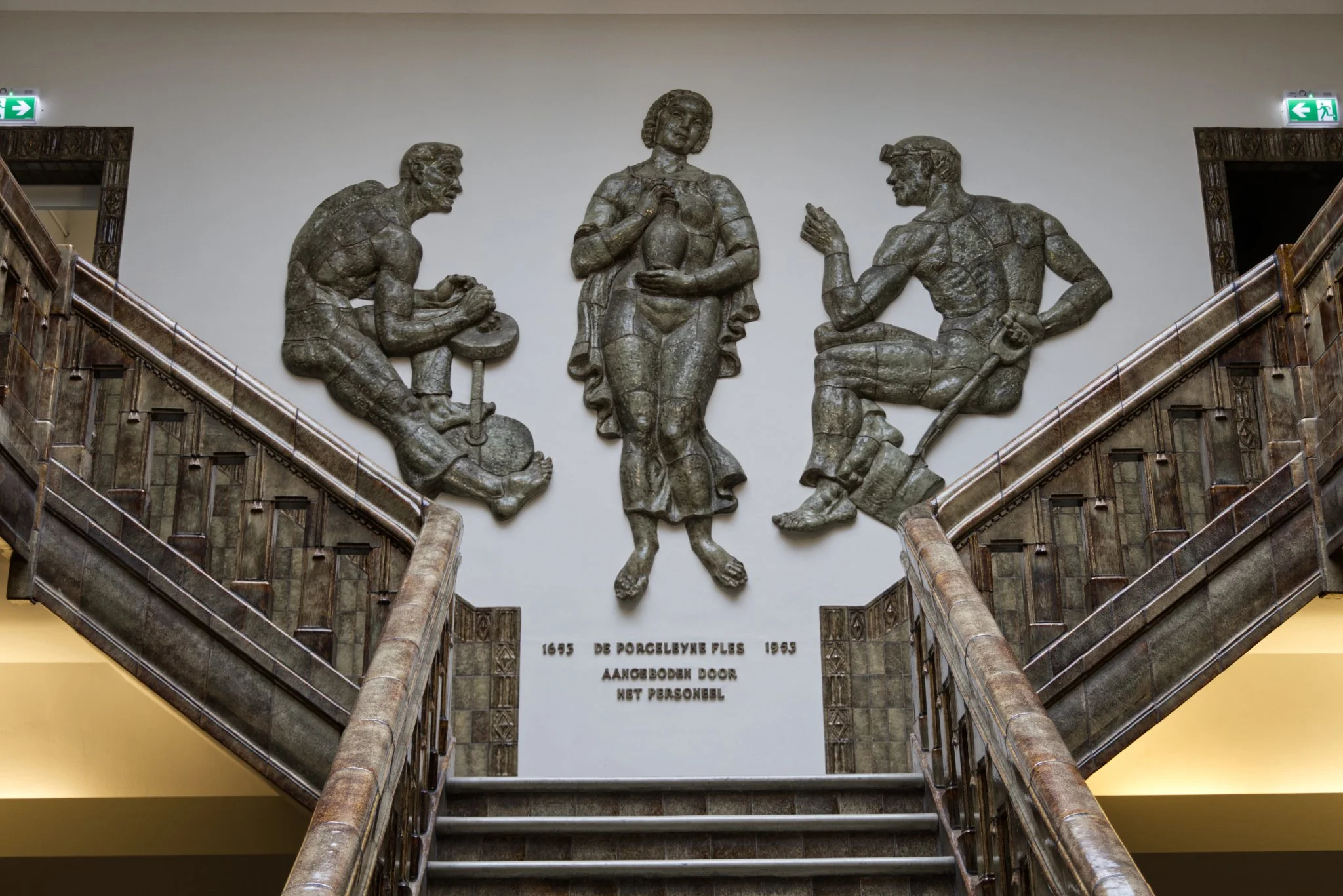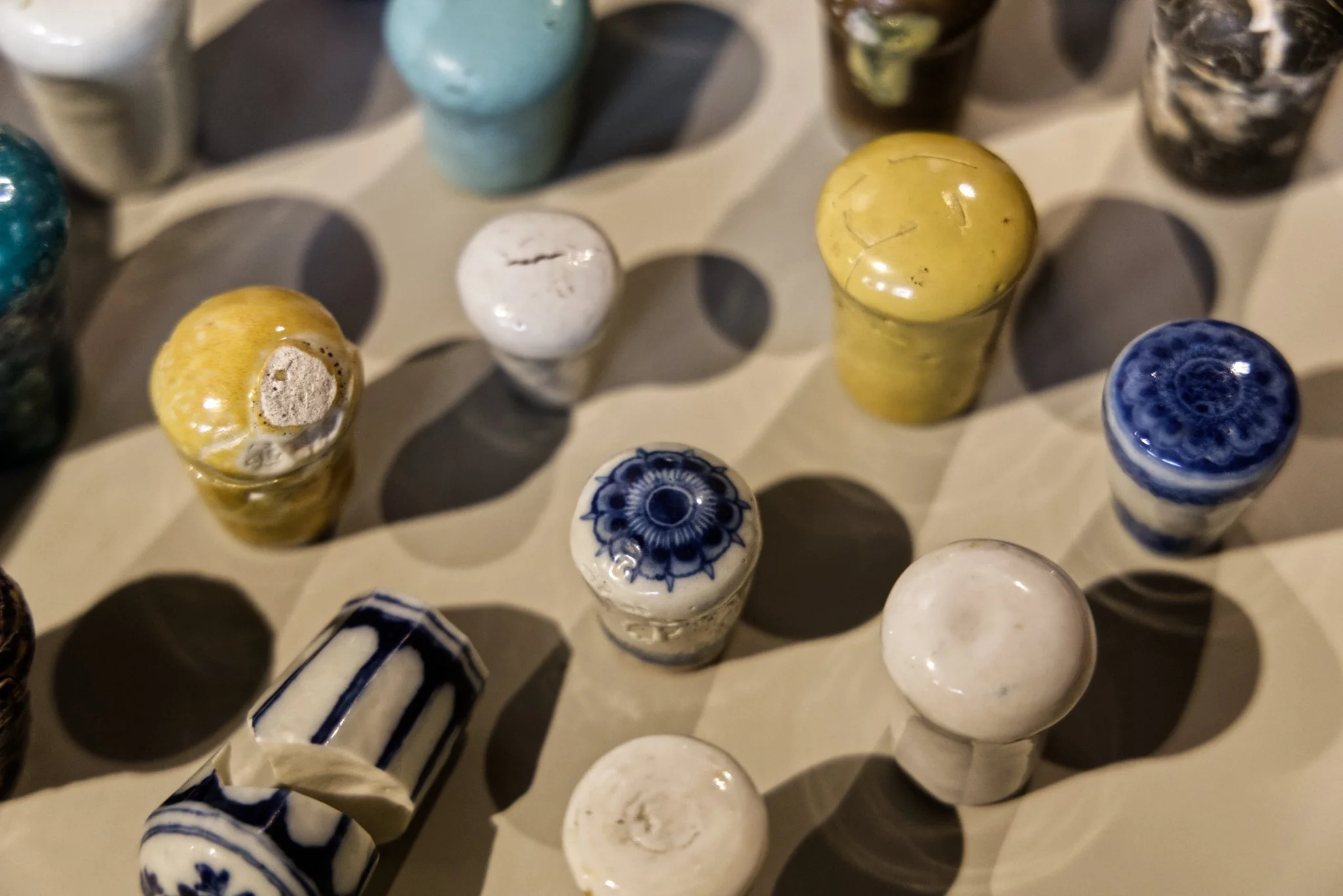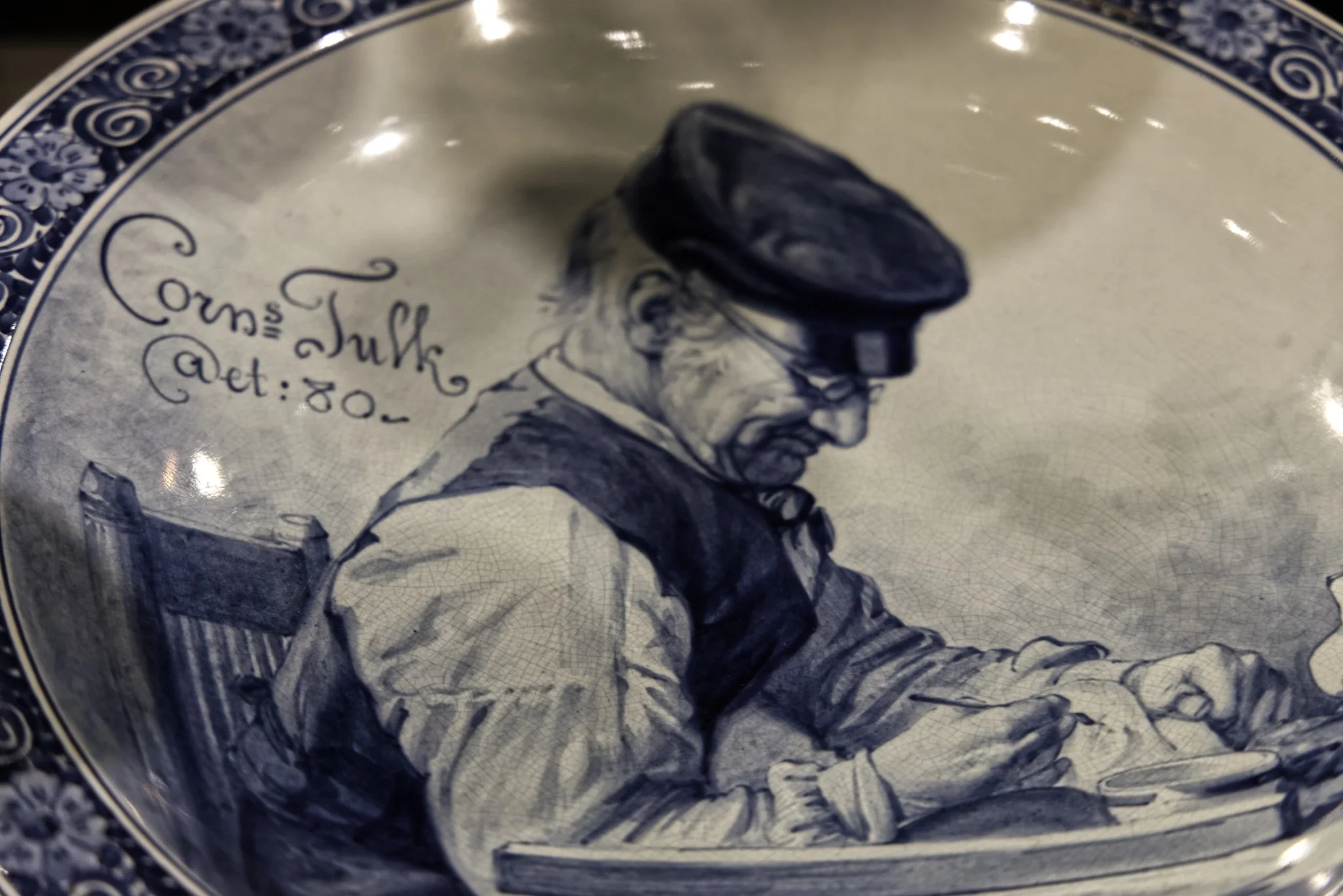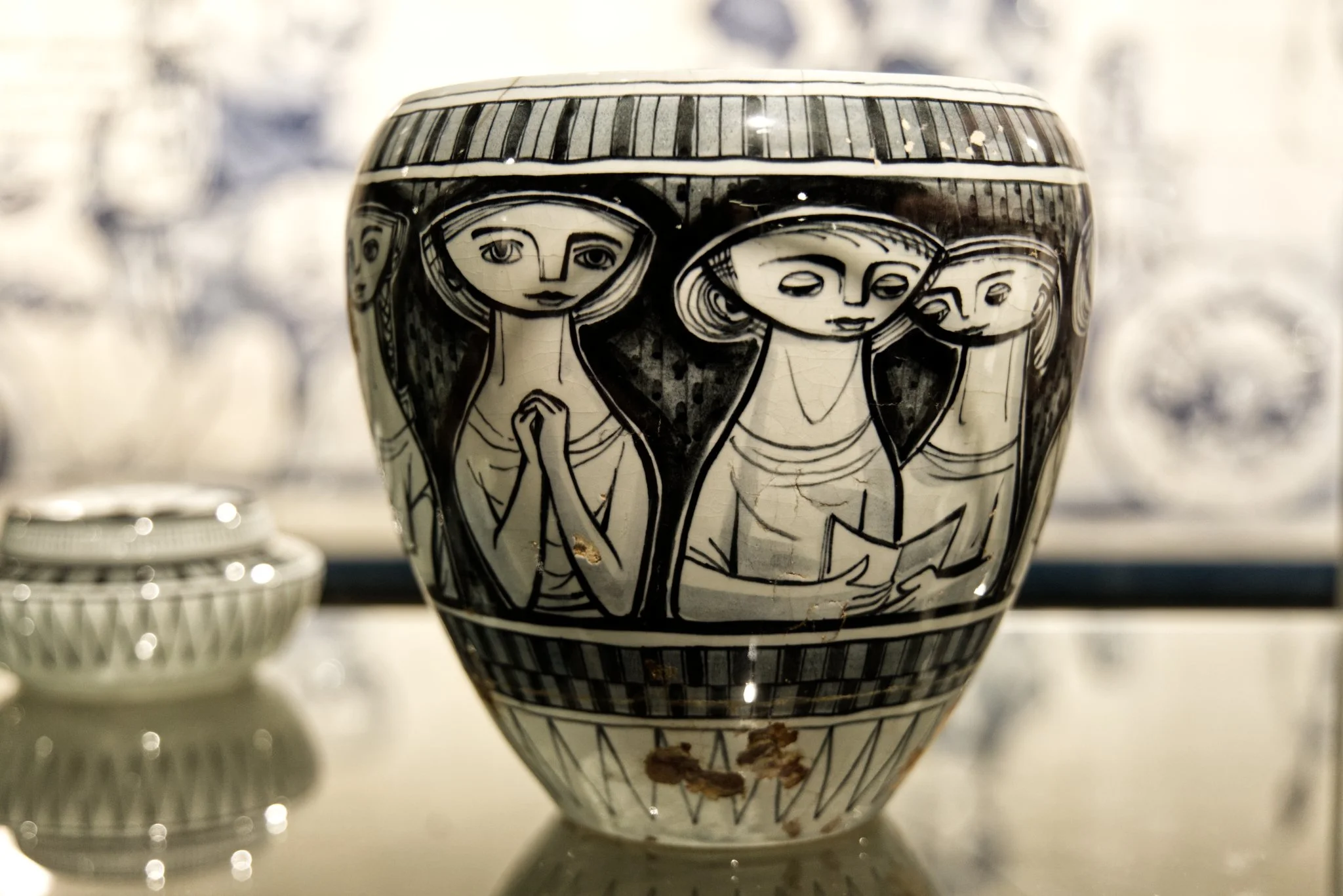First stop - Delft Museum.
“Of the more than 30 earthenware factories that were located in Delft and the surrounding area around the middle of the 17th century, De Koninklijke Porceleyne Fles is the only one that remains.
The exact date when the first workshops emerged is uncertain. It is known, however, that in other places, such as Amsterdam, Haarlem, and Middelburg, pottery with multicolored designs on a white background was already being produced in the second half of the 16th century. This was done using a technique that Dutch potters had learned from their Italian colleagues. The first company in Delft likely didn’t establish itself until the end of the 16th century.
The situation changed when the Sea Beggars, while capturing Portuguese “kraken,” also found Chinese porcelain among their cargo and brought it to Holland. After the founding of the Dutch East India Company in 1602, porcelain with blue designs on a white background was very popular there, and so Dutch potters soon tried to create something similar.
Follow: https://museum.royaldelft.com/ontdek-de-collectie/historie/ for more.”
Then a longer journey than we would have liked (just a long wait while a bridge was raised to let a tanker pass through, and roadworks) but at the end of it we get to spend a couple of nights in a windmill. The windmill was build in 1820, and the sails came off in the sixties when it wa motorised and a while back it went on the market and was bought by the man who met us here and told us all about it.





